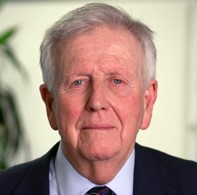A New Way Forward for Peace on the Korean Peninsula
Dr. Michael Schluter and Dr. Jeremy Ive
The underlying issues and way forward
This article is a brief introduction to Relational Peacebuilding Initiatives’ proposal for a new way forward for peace on the Korean Peninsula.
Our starting point is that the problems of the Peninsula can only be resolved if trust is rebuilt between North and South Korea. Any agreement between North Korea and the US is important, obviously, but is secondary to the central issue of the relationship between the Koreans themselves. Any separate agreement between North Korea and the US, without an agreement between North and South Korea, would leave the future of the Korean Peninsula unclear, and possibly unsustainable.
A Bilateral Free-Trade Agreement (BFTA), could be a transformational way forward for North and South Korea to demonstrate mutual respect and to build relationships of mutual trust and benefit. It would be concerned with trade not aid. It would allow North Korea to modernise its economy and at the same time provide South Korea with a significant new dynamic for economic growth through improved trade links with China, Russia and Japan; both North and South Korea benefit.
Our Proposals for the BFTA
1. It would open up one sector of the economy each year, incrementally and cumulatively over seven years, to allow time for both economies to make the necessary internal adjustments. President Kim Jong Un has repeatedly stated his desire to modernise the whole of the North Korean economy, which must include its rural areas.
2. The Trade Agreement would be for a specific period of 7 years. This would allow the opportunity for a formal review at that point as to whether both parties wish to continue.
3. We believe this could best start with the agricultural sector (including livestock, fisheries and forestry) as it is employs over 50% of the labour force in North Korea. The agricultural sector would have maximum multiplier effects to achieve modernisation of the overall economy of North Korea. It would also address North Korea’s food insecurity, and bring important benefits to the environment.
4. It would be important to facilitate trade by removing health risks associated with the transfer of goods, given the prevalence of the Covid virus in East Asia. We suggest that products and equipment for the health sector should be included in the first year of the Agreement.
5. The BFTA could be based on an SDR-type currency which we have termed an ‘Inter-Korean Won’, with a value set at the start by both governments. So it is not tradeable outside the Peninsula. It would be controlled by the two Central Banks which would adjust its value as necessary to avoid any significant trade deficit developing.
The role of the international community
How can the international community help to make all this happen? Their main contribution will be to allow targeted and incremental sectoral sanctions exemptions. Why might the US with the other Security Council members agree to these sanctions exemptions?
First, as far as US is concerned, it is a step-by-step approach over seven years, so it provides a context for regular dialogue between the US and DPRK. What all factions agree on in the new Biden administration is that they want talks on the working level with DPRK. To achieve such talks requires the DPRK is offered a proposal which would offer them economic comprehensive modernisation.
Second, the DMZ would stay in place, so the UN could provide inspectors at all border points used for this trade to ensure that the terms of the sanctions exemptions are respected.
Third, the use of the new SDR-type currency for transactions within this agreement would make it impossible for North Korea to use the gains from the trade to advance their nuclear weapons program, even if they wished to. This would further allay US fears.
Fourth, the Trade Agreement might open the way for a series of international conferences, which would help North Korea modernise its agriculture and other sectors of the economy in the most rapid and effective way possible.
As a “Track Two” process, this would be set within, and would be designed to undergird and not undermine, the continuing “Track One” process of the discussions about the security of the Peninsula, including the vexed question of denuclearisation, however that may be defined. It would be up to North and South Korea to decide together what confidence-building measures they could propose to the international community to meet these wider concerns.
It would be helpful if the US and China were to indicate to both North and South Korea their likely support if both governments should seek together the sanctions exemptions necessary to make this BFTA a reality. Then it would be up to the Koreans themselves, both North and South Korea, to decide if they wish to have a BFTA.
About the authors
Michael Schluter is an economist, who worked previously with the World Bank. He launched a number of significant peace initiatives. The first was in South Africa, involving high-level consultations between the ANC and the White Establishment (1987-1991). He then worked for five years after the genocide in Rwanda with the support of the International Food Policy Research Institute. Thirdly, he organised and led the research for a consultation process between the major political parties and ethnic regional leaders in North and South Sudan (1999-2004). More recently he has been working on peace building in Ukraine and the Korean Peninsula.

Dr. Michael Schluter.
From 1986 until 1989, Jeremy Ive was Secretary and subsequently Director of Research of the Newick Park Initiative on South Africa; Project Advisor of NPI on Rwanda (1994-1999), and then Director of NPI for Sudan Initiative (1999-2002). In 2014, he started new peacebuilding work in Ukraine. When RPI began its peacebuilding initiative in Korea in 2016, he was appointed to be its Senior Adviser with special responsibility for strategic design of RPI initiatives in the light of international developments. In addition, he advises RPI on their methodology in the light of his previous experience of other Track Two processes.

Dr. Jeremy Ive.




Recent comments